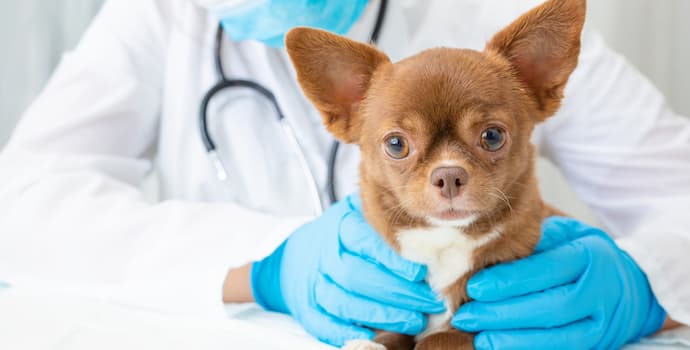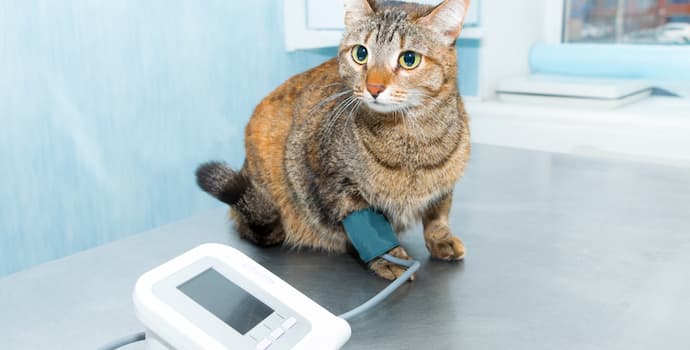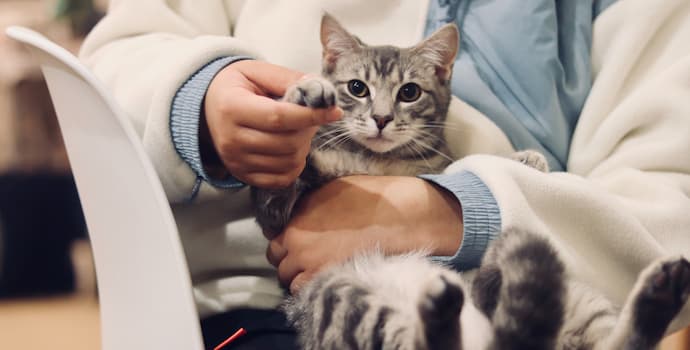Vetpharmacy.co.uk Cookie Policy : We use cookies to enhance your user experience. To find out more please view our cookie policy
Normal Dog & Cat Blood Pressure: Tips for Measuring & Maintaining Pet Health

Normal Dog & Cat Blood Pressure - A guide
It's important to keep an eye on your pet's health. High or low blood pressure in a dog or cat can lead to serious health issues. If you suspect that your pet's blood pressure is not normal, don't hesitate to talk to a veterinarian. Taking prompt action to address any health concerns can prevent severe outcomes.
Monitoring Your Dog's Blood Pressure: Why it Matters
When it comes to your dog's health, one crucial aspect to keep an eye on is their blood pressure. The normal range for systolic pressure (the highest level) in dogs typically falls between 90 to 160 millimetres of mercury (mm Hg). For diastolic pressure (the lowest level) it's between 60 to 100 mm Hg. However, it's worth noting that these values can vary depending on factors such as the dog's size, age, and breed.
For instance, larger dogs may have higher blood pressure readings than smaller dogs. As dog's age, their blood pressure may also increase. It's important to keep an eye out for deviations from the norm. High blood pressure can lead to severe health problems such as kidney disease, heart failure, and stroke. On the other hand, low blood pressure can also cause concerns, with symptoms such as weakness, fainting, and others.
In case of any abnormalities, it's essential to consult a veterinarian to determine the cause and receive proper treatment.
Importance of Checking Your Cat's Blood Pressure: Understanding Normal Ranges
As a cat parent, it's important to have a good understanding of your feline friend's normal blood pressure, just like humans, cats can also be affected by high or low blood pressure.
So, what exactly is considered normal for a cat’s blood pressure?
Generally, a healthy cat's systolic pressure (the highest level) should fall within the range of 110 to 170 millimetres of mercury (mm Hg) and its diastolic pressure (the lowest level) between 70 to 90 mm Hg. However, it's important to remember that these values can vary based on factors such as the size, age, and breed of your cat.
Research suggests that male cats tend to have slightly higher blood pressure than females and that blood pressure increases with age. It's important to keep an eye on your cat's blood pressure, as fluctuations can be an indication of underlying health issues and should be addressed by a veterinarian.

Signs of High Blood Pressure in Dogs and Cats
-Hypertension, or high blood pressure, can be a serious concern for pet owners and can affect both cats and dogs. Knowing the signs of high blood pressure in your furry companion can help you identify it early and get them the treatment they need. Here are a few things to look out for:
-Reduced Energy: A decrease in activity levels compared to their normal behaviour can be an indication of high blood pressure.
-Appetite Changes: High blood pressure can affect your pet's appetite, leading to increased or decreased food consumption.
-Behavioural Changes: If you notice your pet acting more aggressively or becoming more restless, it could be a sign of hypertension
-Physical Changes: High blood pressure can cause changes in your pet's appearance such as swollen legs or face.
-Difficulty Breathing: High blood pressure can place a strain on the heart and lungs, making it harder for your pet to breathe. If you suspect your pet may be experiencing high blood pressure, it's important to consult a veterinarian for a proper diagnosis and treatment.

Top Products for Normal Dog & Cat Blood Pressure
Ensuring your furry companion's well-being is important, which is why it's crucial to keep an eye on their blood pressure. If you suspect your pet is experiencing hypertension or hypotension, don't hesitate to seek help from our veterinarian.
At our vet pharmacy, we offer a range of trustworthy products for cats and dogs that can help maintain healthy blood pressure levels, ensuring a long and happy life. Our team of veterinarians is dedicated to supporting you and your pet with the best options available.
This blog post was written on behalf of Vet Pharmacy by Pharmacy Mentor